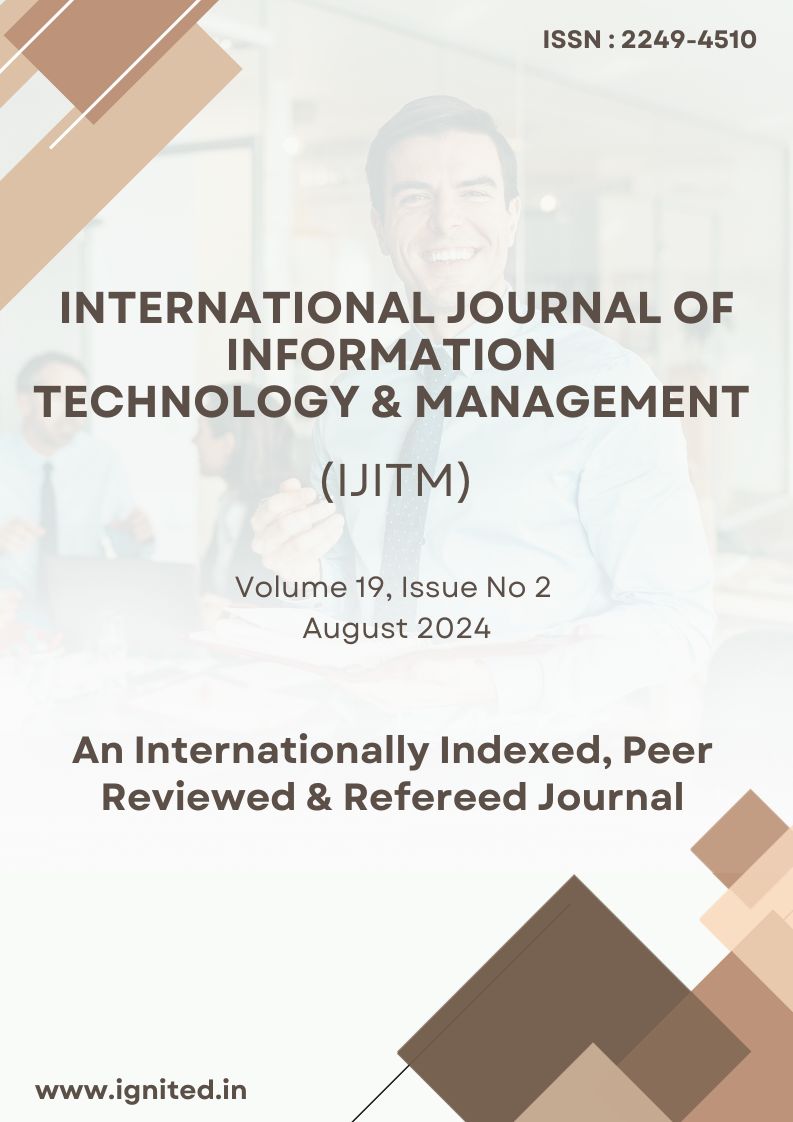Investigate The Stress Intensity Of Marketing Executives In Insurance Companies
Main Article Content
Authors
Abstract
Occupational stress is affecting insurance workers for a variety of reasons, both internal & external, that are related to their job performance. Occupational stress is an escalating issue in the contemporary dynamic work setting, especially among marketing professionals who encounter elevated demands, stringent time constraints, & competing forces Competition in the insurance sector causes widespread emotions of distrust & anxiety among workers, as well as strain in interpersonal relationships, envy among colleagues, interpersonal disputes, & constant pressure to produce & perform life insurance businesses have varying degrees of management.
Downloads
Download data is not yet available.
Article Details
Section
Articles
References
- Bauer, D., Bergmann, D., and Kiesel, R. (2010). On the risk-neutral valuation of life insurance contracts with numerical methods in view. ASTIN Bulletin: The Journal of the IAA, 40(1):65–95.
- Bauer, D., Kiesel, R., Kling, A., and Ruß, J. (2006). Risk-neutral valuation of participating life insurance contracts. Insurance: Mathematics and Economics, 39(2):171– 183.
- Borel-Mathurin, F., Darpeix, P.-E., Guibert, Q., and Loisel, S. (2018). Main determinants of profit-sharing policy in the french life insurance industry. The Geneva Papers on Risk and Insurance-Issues and Practice, 43:420–455.
- Borio, C., Drehmann, M., and Tsatsaronis, K. (2014). Stress-testing macro stress testing: does it live up to expectations? Journal of Financial Stability, 12:3–15.
- Braun, A., Schmeiser, H., and Schreiber, F. (2015). Solvency ii’s market risk standard formula: How credible is the proclaimed ruin probability? Journal of insurance issues, pages 1–30.
- Braun, A., Schmeiser, H., and Schreiber, F. (2017). Portfolio optimization under solvency ii: Implicit constraints imposed by the market risk standard formula. Journal of Risk and Insurance, 84(1):177–207.
- Braun, A., Schmeiser, H., and Schreiber, F. (2018). Return on risk-adjusted capital under solvency ii: Implications for the asset management of insurance companies. The Geneva Papers on Risk and Insurance-Issues and Practice, 43:456–472.
- Poonguzhali, A., (2017) “Camaraderie among Stress, Self-Esteem, Work Life Balance with Special Reference Women Professional’s”. International Journal of Advanced Scientific Research & Development (IJASRD), 4 (Special Issue 1/II), pp. 125 – 132.
- . Raj, A. E. A. I., & Julius, S., (2015) “A Comparative Analysis of Occupational Stress among the Employees Working in Public and Private Sector Banks in Karaikal District of Union Territory of Puducherry, India”. European Academic Research, III (9), pp. 10292 – 10316.
- . Raj, A. E. A. I., & Julius, S., (2016) “Effects of Perceived Stress at Job among Primary and Secondary School Teachers”. International Journal of Advancement in Engineering Technology, Management and Applied Science (IJAETMAS), 3 (11), pp. 97 – 106.
- Raj, A. E. A. I., & Julius, S., (2018) “Causes and Consequences of Work Stress and Coping Behaviour of Employees: An Analysis”. Prabandhan: Indian Journal of Management, 11 (3), pp. 24 – 38.
- . Raj, A. E. A. I., & Rajakrishnan, V. S., (2015) “Profitable Change Management: An Empirical Report”. International Journal of Advanced Scientific Research & Development (IJASRD), 2 (Special Issue 2) Version II, pp. 422 – 429.
- Srinivasan, T., & Lalitha, N., (2015) “A Study on Working Stress of Women Employees in Private Companies in Cuddalore District”. International Journal of Advanced Scientific Research & Development (IJASRD), 2 (Special Issue 2/II), pp. 576 – 584.
- Singh, B., (2017) “Job Stress among Employees in the Insurance Sector”. International Journal of Academic Research and Development, 2(6), pp. 1261 – 1264.
- .Theerthamalai, S., & Rejandiran, K. R., (2015) “Managerial Stress Reduction Techniques and its Effect on Managerial Performance Bank Employee in Chidambaram Town”. International Journal of Advanced Scientific Research & Development (IJASRD), 2 (Special Issue 2/II), pp. 412 – 416.

